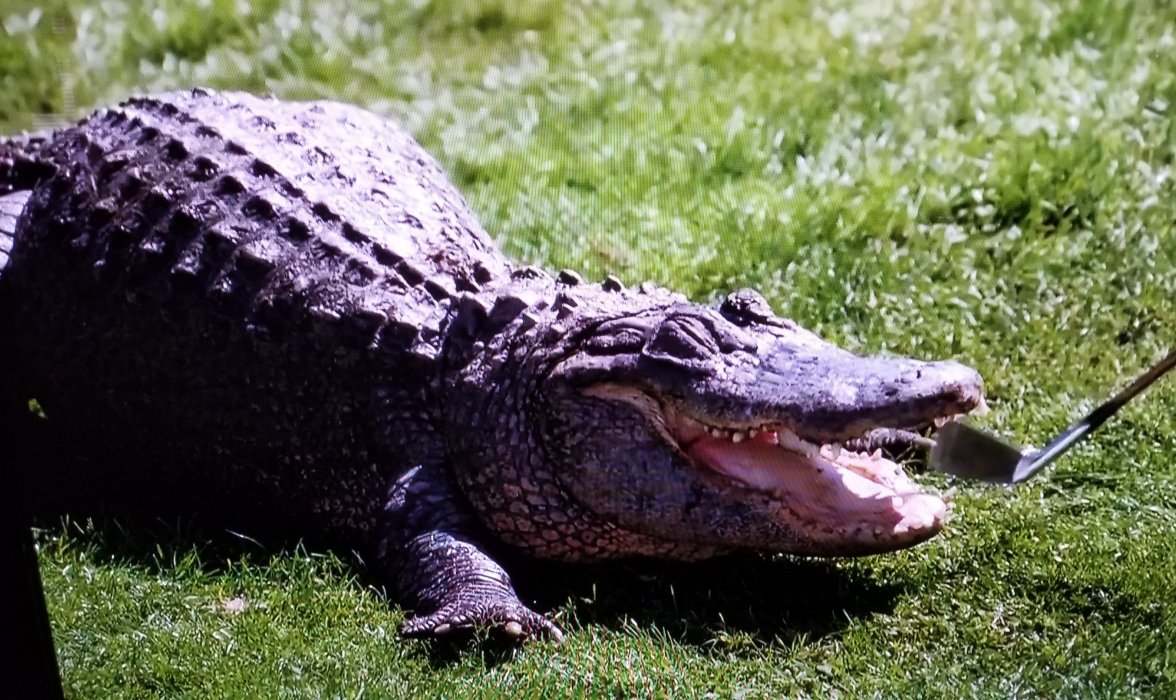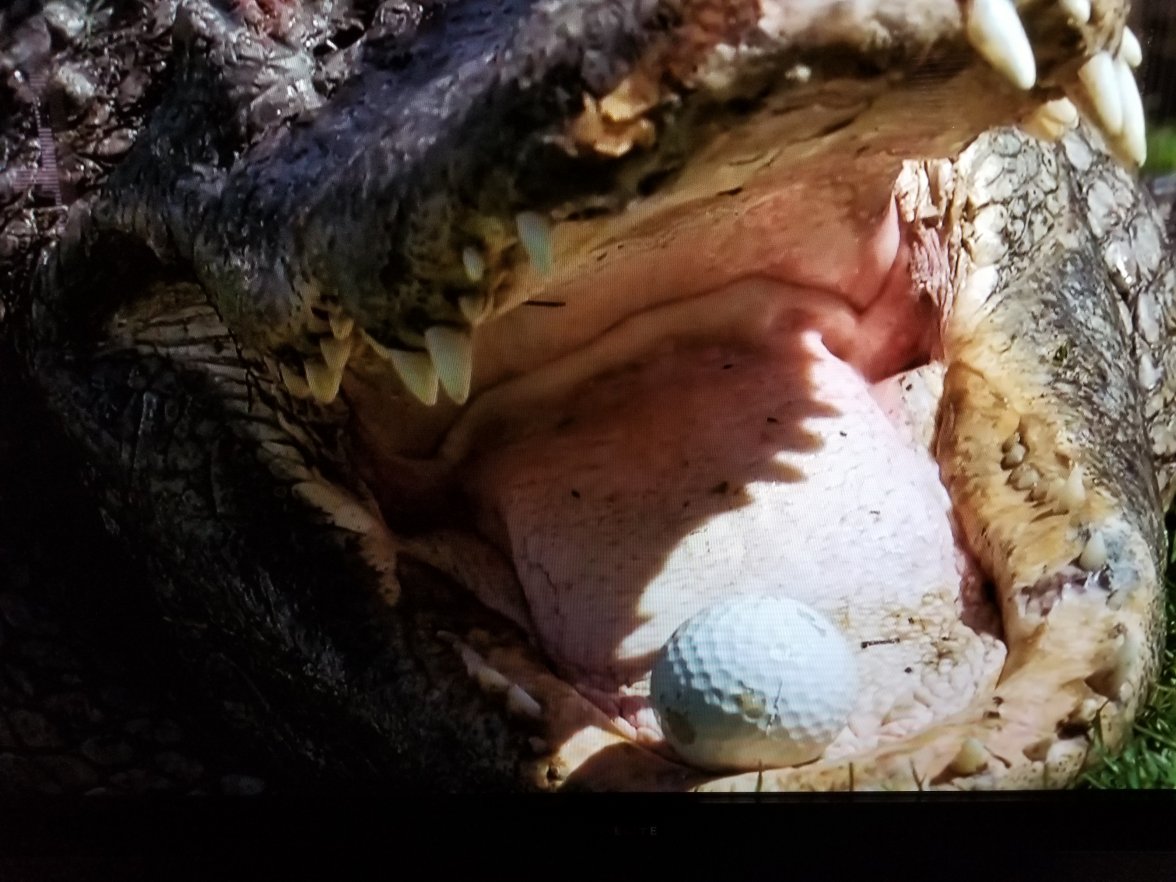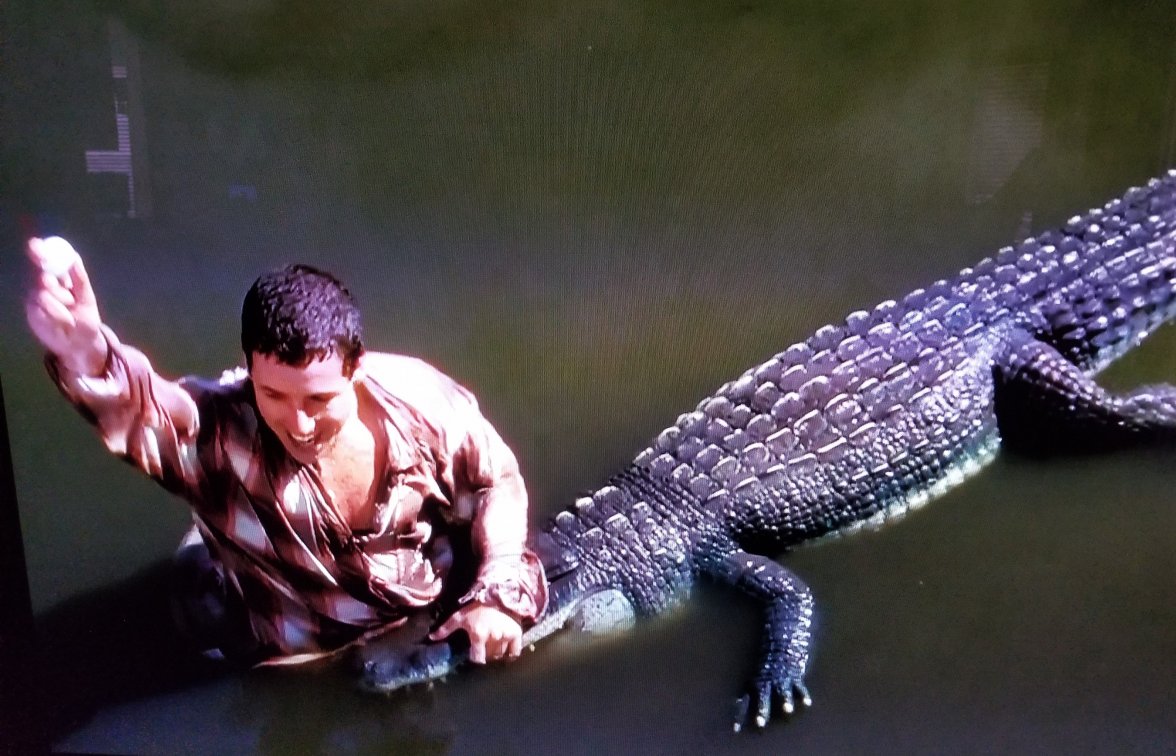Does Patek still use Alligator leather for their straps?
cvalue13
·Interesting - where does this information come from? I order a lot of "Alligator" straps - they are almost always identified as Alligator Mississippiensis as in the example I posted on page 1.
Not to butt in, but since I had seconded the notion:
I personally didn't intend (or take @Wryfox 's comment to mean), that specific straps you've seen listed as Alligator Missi. weren't Missi. Instead, that many luxury products sold as "alligator" are not from Missi., but instead its cousin.
Here's a leather retailer describing the widespread use S American caiman skins:
"However, alligator skin is not the only crocodilian species used for high fashion. Caiman crocodiles are also used in the fashion industry by many. Hailing from South America and Central America, the caiman crocodile’s skin is taken only from farms... While both skins are very desirable for high fashion, they are not the same... Caiman skin is used by brands in high luxury - just not quite ultra luxury like the alligator skin. Handbags and cowboy boots and other ladies’ footwear are common uses for the caiman skin."
And here's another post discussing the resulting semantic or marketing issue:
"Although caiman has its place in the market, mislabeling has become such a problem that the buyer need beware. Many caiman products are marked crocodile or alligator and sold at the high prices of these classic leathers. Alligator is sometimes marked crocodile and crocodile marked alligator. Some of this is a cultural difference; Americans tend to call all "crocodile" alligator, and Europeans tend to call "alligator" crocodile. Upon close inspection, one will find that some large pieces have mixed leather in them. In the past it was fashionable to make a purse with alligator on one side and crocodile on the other. Today, due to product cost, it is not uncommon to see a purse with alligator or crocodile on the front and back and caiman on the sides with a caiman strap."
Elsewhere in these and other posts it notes the difference in hide sizes, the degree of scale relief, and differences in the skin qualities.
Because of all that, while I am sure there are high end brands using U.S. alligator for straps, I would guess (but don't know) that for any such straps they must be using very juvenile alligator skins - otherwise, the desired type of backstrap scale relief pattern might hardly show up as anything other than one, big, flat scale on a piece as small as a strap. This is also why the quote above mentions that even true alligator handbags will often have caiman straps, etc.
Even for something as large as cowboy boots, achieving the desirable alligator-like backstrap scale relief across the boot requires either a very small alligator or - more commonly - a caiman.
I have meanwhile definitely seen many WRUW posts of watches on "alligator" straps that were almost certainly caiman (due to both the size of scale relief but also the calcification of the scales).
Anywho, anyone insistent on having actual U.S. alligator beware. 😵💫
PS: In a former life I was a herpetologist/reptile nerd
gatorcpa
··ΩF InvestiGatorTo confuse matters even more, the translation of the English word “alligator” into Spanish is “caimán”.
So in Spanish speaking countries, they cannot tell the difference between an alligator and a caiman without pictures.
gatorcpa
So in Spanish speaking countries, they cannot tell the difference between an alligator and a caiman without pictures.
gatorcpa
lexieb007
·Not to butt in, but since I had seconded the notion:
I personally didn't intend (or take @Wryfox 's comment to mean), that specific straps you've seen listed as Alligator Missi. weren't Missi. Instead, that many luxury products sold as "alligator" are not from Missi., but instead its cousin.
Here's a leather retailer describing the widespread use S American caiman skins:
"However, alligator skin is not the only crocodilian species used for high fashion. Caiman crocodiles are also used in the fashion industry by many. Hailing from South America and Central America, the caiman crocodile’s skin is taken only from farms... While both skins are very desirable for high fashion, they are not the same... Caiman skin is used by brands in high luxury - just not quite ultra luxury like the alligator skin. Handbags and cowboy boots and other ladies’ footwear are common uses for the caiman skin."
And here's another post discussing the resulting semantic or marketing issue:
"Although caiman has its place in the market, mislabeling has become such a problem that the buyer need beware. Many caiman products are marked crocodile or alligator and sold at the high prices of these classic leathers. Alligator is sometimes marked crocodile and crocodile marked alligator. Some of this is a cultural difference; Americans tend to call all "crocodile" alligator, and Europeans tend to call "alligator" crocodile. Upon close inspection, one will find that some large pieces have mixed leather in them. In the past it was fashionable to make a purse with alligator on one side and crocodile on the other. Today, due to product cost, it is not uncommon to see a purse with alligator or crocodile on the front and back and caiman on the sides with a caiman strap."
Elsewhere in these and other posts it notes the difference in hide sizes, the degree of scale relief, and differences in the skin qualities.
Because of all that, while I am sure there are high end brands using U.S. alligator for straps, I would guess (but don't know) that for any such straps they must be using very juvenile alligator skins - otherwise, the desired type of backstrap scale relief pattern might hardly show up as anything other than one, big, flat scale on a piece as small as a strap. This is also why the quote above mentions that even true alligator handbags will often have caiman straps, etc.
Even for something as large as cowboy boots, achieving the desirable alligator-like backstrap scale relief across the boot requires either a very small alligator or - more commonly - a caiman.
I have meanwhile definitely seen many WRUW posts of watches on "alligator" straps that were almost certainly caiman (due to both the size of scale relief but also the calcification of the scales).
Anywho, anyone insistent on having actual U.S. alligator beware. 😵💫
PS: In a former life I was a herpetologist/reptile nerd
Edited:
lexieb007
·And BTW all I'm not ranting. I am just seeking the facts here....
Archer
··Omega Qualified WatchmakerNot to butt in, but since I had seconded the notion:
I personally didn't intend (or take @Wryfox 's comment to mean), that specific straps you've seen listed as Alligator Missi. weren't Missi. Instead, that many luxury products sold as "alligator" are not from Missi., but instead its cousin.
The statement I am questioning is the one that says:
"The vast majority of 'Alligator' straps are actually South American Caimans"
I used my own experience, ordering plenty of straps that were not "South American Caimans" as my own example. I was not suggesting that straps I ordered were being misrepresented.
Here's a leather retailer describing the widespread use S American caiman skins:
"However, alligator skin is not the only crocodilian species used for high fashion. Caiman crocodiles are also used in the fashion industry by many. Hailing from South America and Central America, the caiman crocodile’s skin is taken only from farms... While both skins are very desirable for high fashion, they are not the same... Caiman skin is used by brands in high luxury - just not quite ultra luxury like the alligator skin. Handbags and cowboy boots and other ladies’ footwear are common uses for the caiman skin."
Immediately preceding this quote, this same article states this:
"One of the most popular materials for the fashion-conscious is the supple, luxurious hide of the American alligator. "
So although I know and understand that Caiman skins are used for leather goods, this doesn't yet say anything about the vast majority of straps being sold as alligator actually being made from SA Caiman skins, which is what I'm asking about.
And here's another post discussing the resulting semantic or marketing issue:
"Although caiman has its place in the market, mislabeling has become such a problem that the buyer need beware. Many caiman products are marked crocodile or alligator and sold at the high prices of these classic leathers. Alligator is sometimes marked crocodile and crocodile marked alligator. Some of this is a cultural difference; Americans tend to call all "crocodile" alligator, and Europeans tend to call "alligator" crocodile. Upon close inspection, one will find that some large pieces have mixed leather in them. In the past it was fashionable to make a purse with alligator on one side and crocodile on the other. Today, due to product cost, it is not uncommon to see a purse with alligator or crocodile on the front and back and caiman on the sides with a caiman strap."
Sure, but this is why proper documentation will define the scientific name - again I refer you to the photo I posted on page 1, where Alligator mississippiensis is clearly noted on the package.
Wryfox didn't actually use a scientific name, so I don't what species he is referring to specifically, but again that is sort of a moot point. I'm trying to understand where he received this information from...
Anywho, anyone insistent on having actual U.S. alligator beware. 😵💫
Not sure why - again the strap I posted on page one, bought directly from Omega, is without a doubt Alligator mississippiensis.
texasmade
·I doubt that high-end luxury companies would mislead their customers by giving them caiman instead of alligator to save a few bucks. The reputational damage is much larger than the money saved.
lexieb007
·^ one would hope that's the case... then again the wildlife illegal trade "has it's way" in so many other situations... particularly when there is large financial reward at stake. These straps are expensive....
Archer
··Omega Qualified Watchmaker^ one would hope that's the case... then again the wildlife illegal trade "has it's way" in so many other situations... particularly when there is large financial reward at stake. These straps are expensive....
Buy from a reputable source, and you will get a properly sourced strap. It's not complicated mate...
texasmade
·^ one would hope that's the case... then again the wildlife illegal trade "has it's way" in so many other situations... particularly when there is large financial reward at stake. These straps are expensive....
cvalue13
·So although I know and understand that Caiman skins are used for leather goods, this doesn't yet say anything about the vast majority of straps being sold as alligator actually being made from SA Caiman skins, which is what I'm asking about
Your post is a long way of saying you disagree with @Wryfox more than you disagree with me?
Anyone misunderstanding my post: only meant to be a general FYI about the broader market for "alligator" straps - never intended comment on PP/Omega in particular, but instead that:
-> If any strap is labeled alligator mississippiensis, then it's either U.S. alligator-alligator, or someone's lying (PP/Omega would never need to)
-> if any strap is labeled merely "alligator" or "crocodile" then it could be either caiman or U.S. alligator (and depending on the source/price, a good chance it could be caiman instead of U.S. alligator, in my view - given the differences in pattern qualities, etc.)
really nothing to disagree with there
cvalue13
·Watch straps have tiny scale patterns. So if a customer buys an "alligator" strap from a Patek or Omega AD...lets say it's replaced in a registered official AD service center, that customer can assume and be assured that it's guaranteed 100% baby (aka "juvenile") mississippi alligator? (and not some other species)?
My main assumptions:
-> If PP/Omega say its A. mississippiensis, it's A. mississippiensis
-> If it's a watch strap using A. mississippiensis, I assume it's often from a tiny A. mississippiensis (due to reason and the relative size of desirable scale patterns), but I suppose only a gator-hide supplier could tell us for sure
I mean does CITES allow the capture and harvesting of baby alligators? Wouldn't there be a size limit? Surely all baby alligators would have to come from farms?
Yes, I'd assume juvenile 'gators used as hides in accordance with law would be farmed.
Archer
··Omega Qualified WatchmakerYour post is a long way of saying you disagree with @Wryfox more than you disagree with me?
Anyone misunderstanding my post: only meant to be a general FYI about the broader market for "alligator" straps - never intended comment on PP/Omega in particular, but instead that:
-> If any strap is labeled alligator mississippiensis, then it's either U.S. alligator-alligator, or someone's lying (PP/Omega would never need to)
-> if any strap is labeled merely "alligator" or "crocodile" then it could be either caiman or U.S. alligator (and depending on the source/price, a good chance it could be caiman instead of U.S. alligator, in my view - given the differences in pattern qualities, etc.)
really nothing to disagree with there
I didn't ask the question of you clearly, but you stepped in to comment on my question to Wryfox.
My post is a response to your post, which didn't really explain Wryfox's post or answer my question.
If it's not already clear, I'm looking for evidence that "the vast majority of 'Alligator' straps are actually South American Caimans" as was claimed. And to be extra clear, I'm not asking you, because you didn't make the claim (although you seemed to agree with it).
Cheers, Al
Alfista88
·I was able to purchase 2 Omega alligator straps in California in 2020, directly from the Swatch retail network. 1 from the SF Tourbillion, and 1 from the OC Omega boutique. Majority of the Breguet at the Tourbillon had alligator straps as well.
The sales staff at both mentioned there's never been any enforcement on that contested California ban on alligator.
For those who haven't tried it: I highly, highly recommend the alligator cheesecake at Jacques-Imo's when in New Orleans. Heaven on a fork.
The sales staff at both mentioned there's never been any enforcement on that contested California ban on alligator.
For those who haven't tried it: I highly, highly recommend the alligator cheesecake at Jacques-Imo's when in New Orleans. Heaven on a fork.
- Posts
- 2,326
- Likes
- 7,545
asrnj77
·- Posts
- 2,326
- Likes
- 7,545
pongster
·I was able to buy a black alligator strap from local PP AD last December. It doesnt answer OP’s question though as he wants to know about watches sold by PP with alligator strap.
that said, i dont know if what i got was USA alligator or SA caiman.
locally, we dont have a shortage of alligators/crocodiles. Lots of them in government. 😉
that said, i dont know if what i got was USA alligator or SA caiman.
locally, we dont have a shortage of alligators/crocodiles. Lots of them in government. 😉
Lovemy8541
·I was able to purchase 2 Omega alligator straps in California in 2020, directly from the Swatch retail network. 1 from the SF Tourbillion, and 1 from the OC Omega boutique. Majority of the Breguet at the Tourbillon had alligator straps as well.
The sales staff at both mentioned there's never been any enforcement on that contested California ban on alligator.
For those who haven't tried it: I highly, highly recommend the alligator cheesecake at Jacques-Imo's when in New Orleans. Heaven on a fork.
I will head there next time I'm in the area!
lexieb007
·Ok update on this thread - I have it on good authority that PP only source farmed Alligator from Southern US. After being tanned elsewhere on route to France (where they are made into straps) they then wind up in PP HQ where they are only sold worldwide via registered PP service agents. Good to know. 👍




